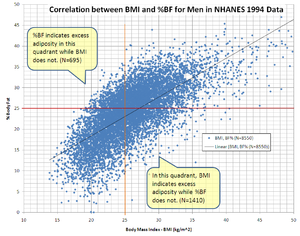New regulations could make certain programs more costly and, worse, hinder them from achieving goals that can reduce a company’s health-care costs.
CFO.com:Health Benefits | May 30, 2013
David McCann
Final regulations for operating wellness programs in compliance with the Affordable Care Act, issued on Wednesday, could increase companies’ costs and dilute the value they aim to get from the most rigorous programs.
“Outcome-based” wellness programs, which require participants to attain or maintain one or more specific health outcomes in order to get a reward or avoid a penalty, may be significantly compromised. (Such outcomes could be, for example, weight loss, blood-pressure level, certain biometric-screening results or smoking cessation.)
Existing rules for such programs under the Health Insurance Portability and Accountability Act of 1996 (HIPAA) require employers to offer a “reasonable alternative standard” that gives an opportunity to earn the reward or avoid the penalty to employees who, for medical reasons, can’t or shouldn’t try to achieve the health outcome. Such employees must prove their eligibility for the exception with a physician’s certification.
 |
| English: The graph shows the correlation between body mass index (BMI) and percent body fat (%BF) for men in NCHS' NHANES III 1994 data. The body fat percent shown uses the method from Romero-Corral et al. to convert NHANES BIA to %BF (June 2008). "Accuracy of body mass index in diagnosing obesity in the adult general population". International Journal of Obesity 32 (6) : 959–956. DOI:10.1038/ijo.2008.11. PMID 18283284. (Photo credit: Wikipedia) |
“Regardless of the type of wellness program, every individual participating in the program should be able to receive the full amount of any award or incentive, regardless of any health factor,” the regulations state. The reason for that is “to ensure that the program is reasonably designed to improve health and is not a subterfuge for underwriting or reducing benefits based on health status.”
 |
| English: 8 women with the same Body Mass Index rating (BMI - 30) but with different weight distribution and abdominal volume, so they have different Body Volume Index (BVI) ratings. Select Research, 09-09-08 (Photo credit: Wikipedia) |
In most cases, the alternative standards companies set for outcome-based programs are much easier to achieve than the normal standards, notes Steve Wojcik, vice president of public policy for the National Business Group on Health (NBGH), which represents the interests of 364, mostly large companies on healthcare-related matters. Often the alternative is activity-based rather than outcome-based, diluting the distinction between the two kinds of programs.
“If you have lots of people opting out from the standard, it could reduce the effectiveness of the program,” says Wojcik. “The whole reason for incentives is to induce people to work on their health.” He likened the new rule to an element of today’s youth sports, “where everyone gets a trophy, everyone is a winner. You don’t even have to try.”
And the new regulations could raise the costs of outcome-based programs, he says, because the company may have to deal with each person opting for the alternative standard on a one-on-one basis, possibly talk with their physicians, and figure out a program for each person that enables him or her to get the incentive.
“This adds a layer of complexity to these programs that will make employers think harder about offering one,” Wojcik says. “It’s already difficult to move the needle on employee health, but it’ll probably be more difficult now.”
According to results of a study by NBGH and Fidelity Investments released in February, 41 percent of surveyed employers offered wellness programs with outcome-based elements or planned to start doing so.
The new regulations also increase the maximum reward employers can offer in wellness programs, to 30 percent of the total cost of an employee’s health coverage (both the employer and employee shares), from 20 percent under HIPAA. The reward can be up to 50 percent of that cost for smoking-cessation programs. However, even now few companies offer rewards anywhere near the current 20-percent level, Wojcik notes.











No comments:
Post a Comment